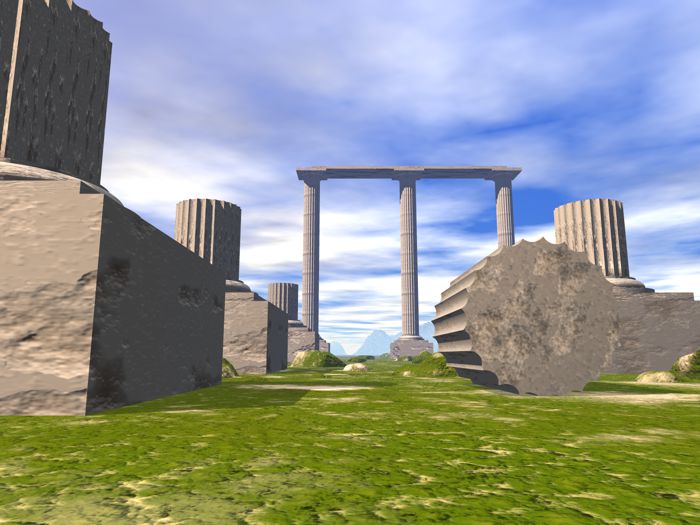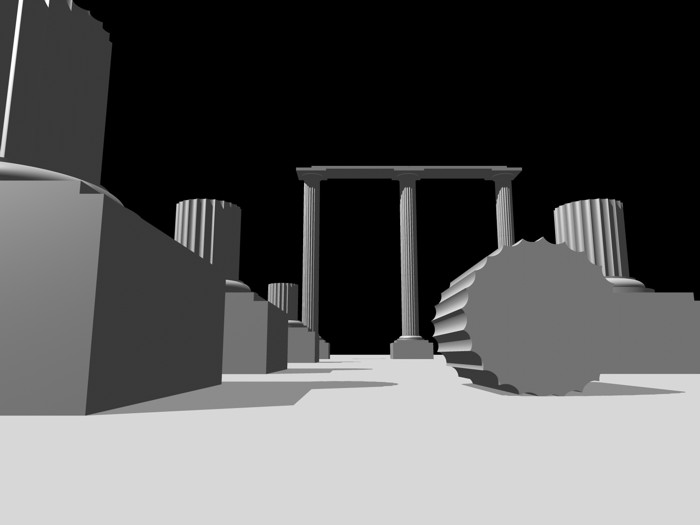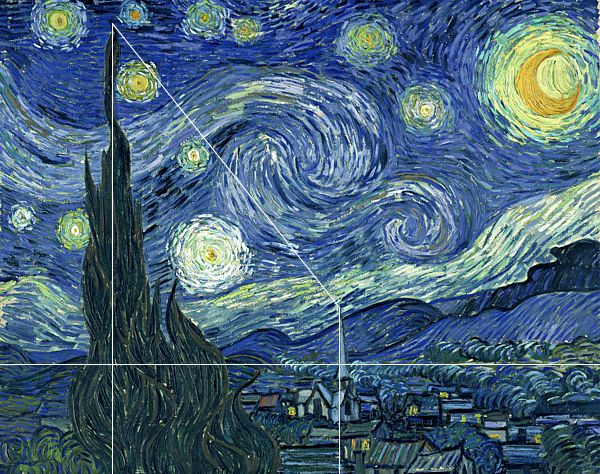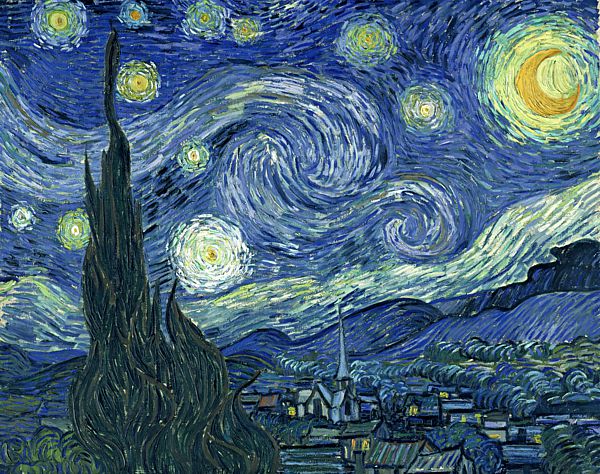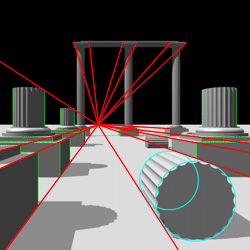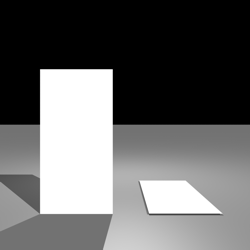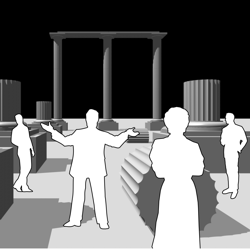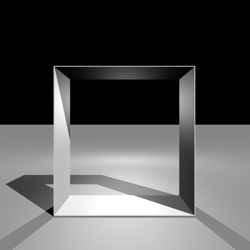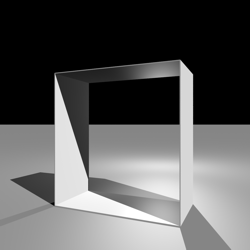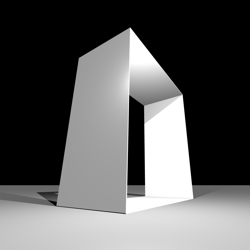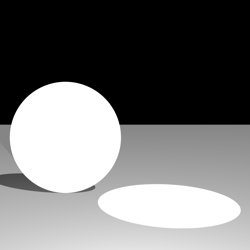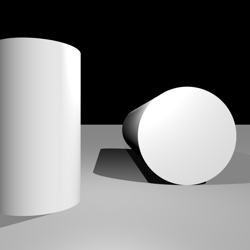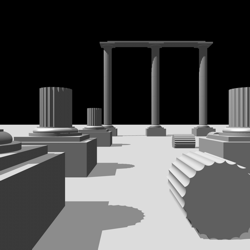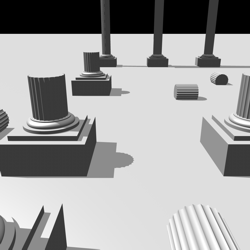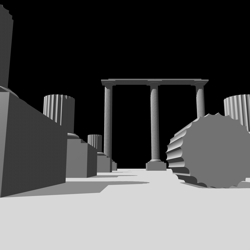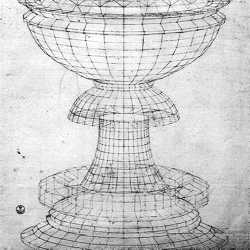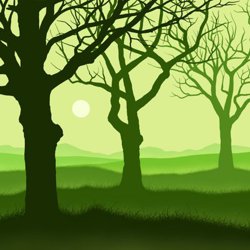Perspective Drawing - Using a Low Eye Level
This lesson illustrates how a low eye level can be used for dramatic effect in landscape painting.
(swipe the image back and forward to view)
A low eye level can be used for great dramatic effect in landscape painting. By lowering the viewpoint, you emphasize the height and power of objects in the foreground. This has the effect of making the viewer feel very small and the landscape seem very powerful.
A Low Eye Level Sets the Mood

A low eye level is ideal for landscapes where the sky plays an important role in creating the mood of the work. Using a low eye level in perspective drawing creates the space for a large area of sky. This increased area of sky then becomes a major element which can impact upon the scale, tone, color and mood of the picture.
As the sky is the main source of light in a landscape, it establishes the keynotes of tone and color in the work. By varying the contrast or harmony of tones and adjusting the emotional impact of the colors, we can create a dramatic or calm atmosphere. Our illustration demonstrates a wide range of such possibilities.
Famous Artworks that use a Low Eye Level

JOHN CONSTABLE (1776-1837)
'Stonehenge, Wiltshire', 1836 (oil on canvas)
In his striking watercolor of this ancient monument, Constable uses a low eye level to make space for the dramatic sky whose energetic brushwork injects life into what would otherwise be a silent and still image.

JOSEPH M W TURNER (1775-1851)
'The Fighting Temeraire', 1838 (oil on canvas)
As well as creating a spectacularly radiant sky with his setting sun, Turner also uses the low eye level to emphasize the height of the ghostly ship, even although it is still some distance away.
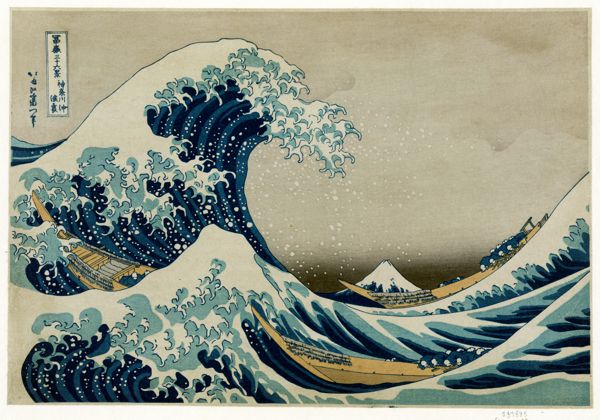
KATSUSHIKA HOKUSAI (1760-1849)
'The Great Wave off Kanagawa', 1823-29 (woodblock print)
In this Hokusai woodblock print, from the series '36 Views of Mount Fuji', a low eye level is used to emphasize the colossal height and power of the huge wave which seems ready to engulf Mount Fuji itself.
VINCENT VAN GOGH (1853-90)
'Starry Night', 1889 (oil on canvas)
(Click on the flip icon to view)
One of the most dramatic skies in the history of painting is 'Starry Night' by Vincent Van Gogh. There is direct link between the rhythms of the rolling landscape and the swirling power of the heavens above. The picture uses the vast area of sky, created by the use of a low eye level, to convey the turbulent energy of the universe from which the landscape draws its sustenance.
In ancient Greece the followers of Pythagoras believed in 'The Music of the Spheres'. They thought that each planet in our solar system emitted a sound as it orbited the sun and that together they harmonized to create a heavenly tone. In Van Gogh's picture, the 'music of the spheres' is not so harmonic. It reaches a ferocious crescendo that resonates through the hills, trees and village. This is a painting that depicts colossal power of nature as it overwhelms the scale of man.
If you live in the city today, light pollution from commercial and domestic lighting makes it is difficult to appreciate the power and beauty of the night sky. On a good night you can only make out a few of the major stars. However in the pitch black night of the countryside, you can literally see countless thousands of sparkling constellations. The awesome wonder of this vision leaves you with a profound sense of humility as you cannot help but appreciate your own smallness. Van Gogh's imagination confronts the frightening power of this infinite domain and he expresses his amazement in the exaggerated rhythms and colors of his brushstrokes. Although 'Starry Night' is not a 'realistic' image, there is no more powerful nor honest depiction of the sky at night.
The low eye level divides this painting into two symbolic areas: the heavenly sky and the humble town. (Click on the flip icon to view).
The Heavenly Sky: the large area above the eye level which creates the space that is necessary to display the convulsive power of the starlit heavens.
The Humble Town: the small area below the eye level which compresses the town into its humble position at the bottom of the picture.
Van Gogh sees this arrangement as the natural order where man is diminished when confronted by the greater forces of nature and creation. He continues this comparison by echoing the shape of the cypress tree with the church spire. These symbols, one a creation of nature - the other a creation of man, stand out as they are the only vertical elements in the picture. Both symbols point to the heavens: the natural tree is strong, confident and in harmony with the elements; the man-made spire is weak, artificial and straining to reach the stars.
On a technical level he uses the difference in size between the tree and spire to create some illusion of spatial depth, a visual element that is otherwise sacrificed to the strength of texture and pattern in the painting.

